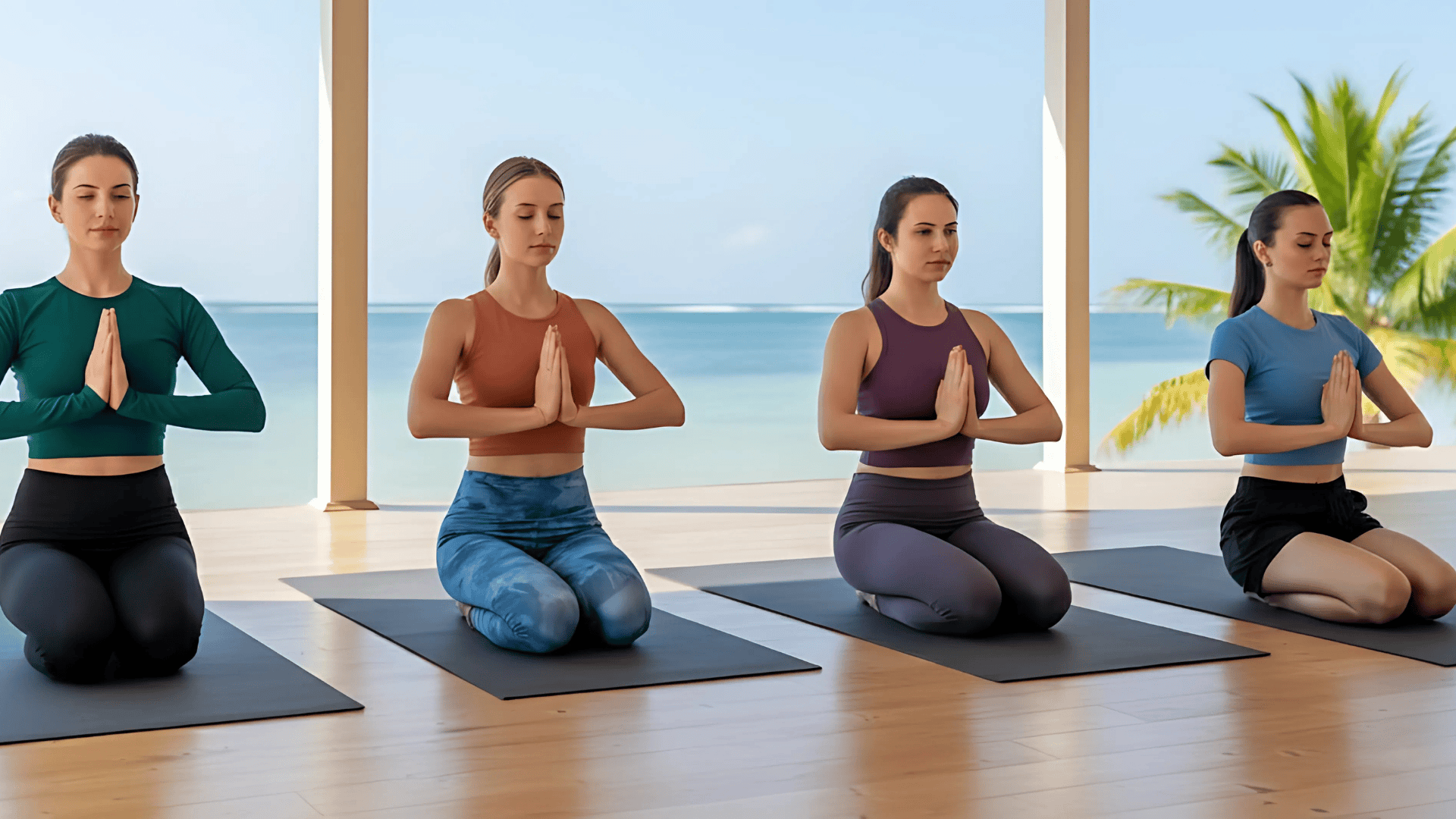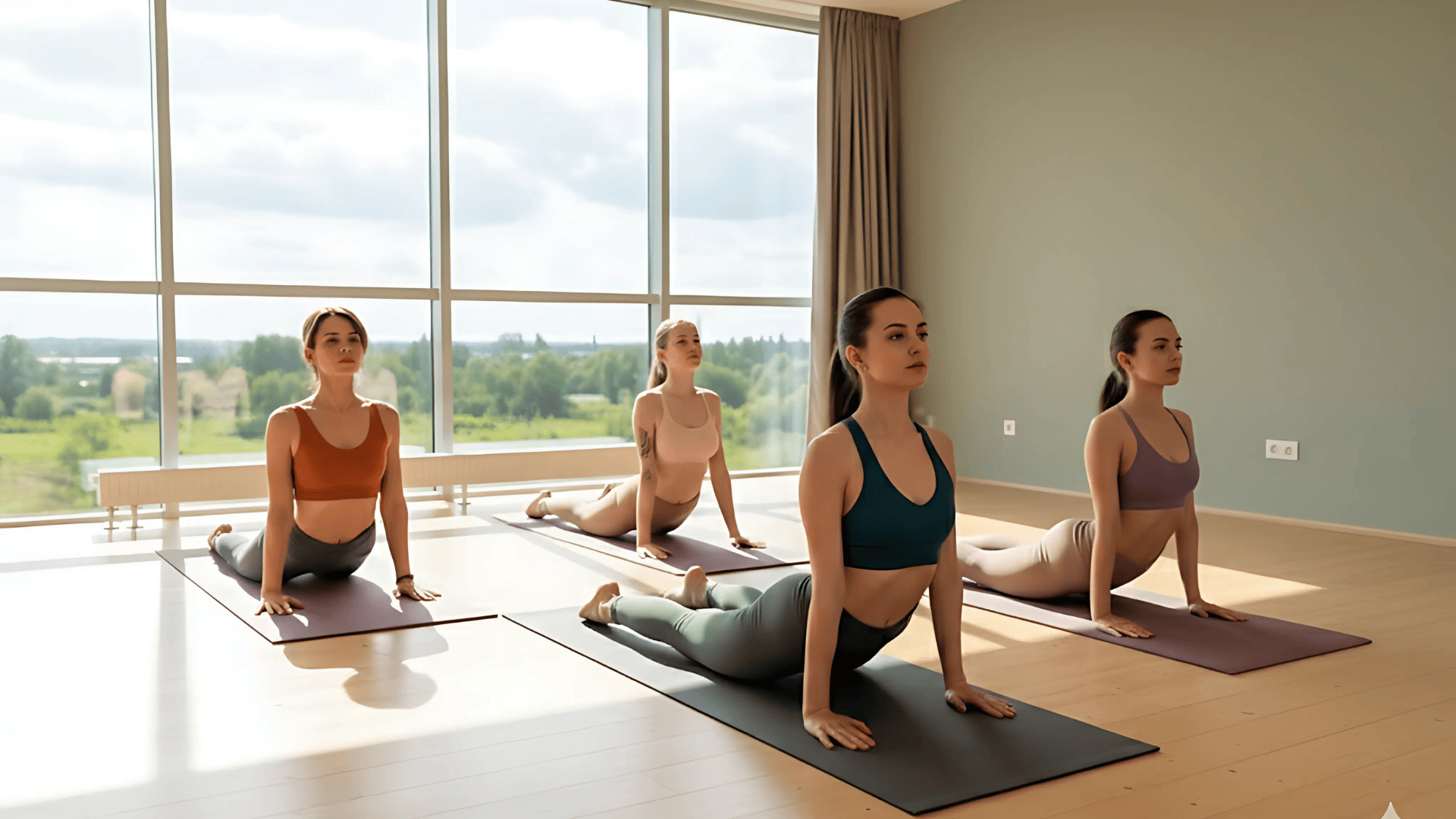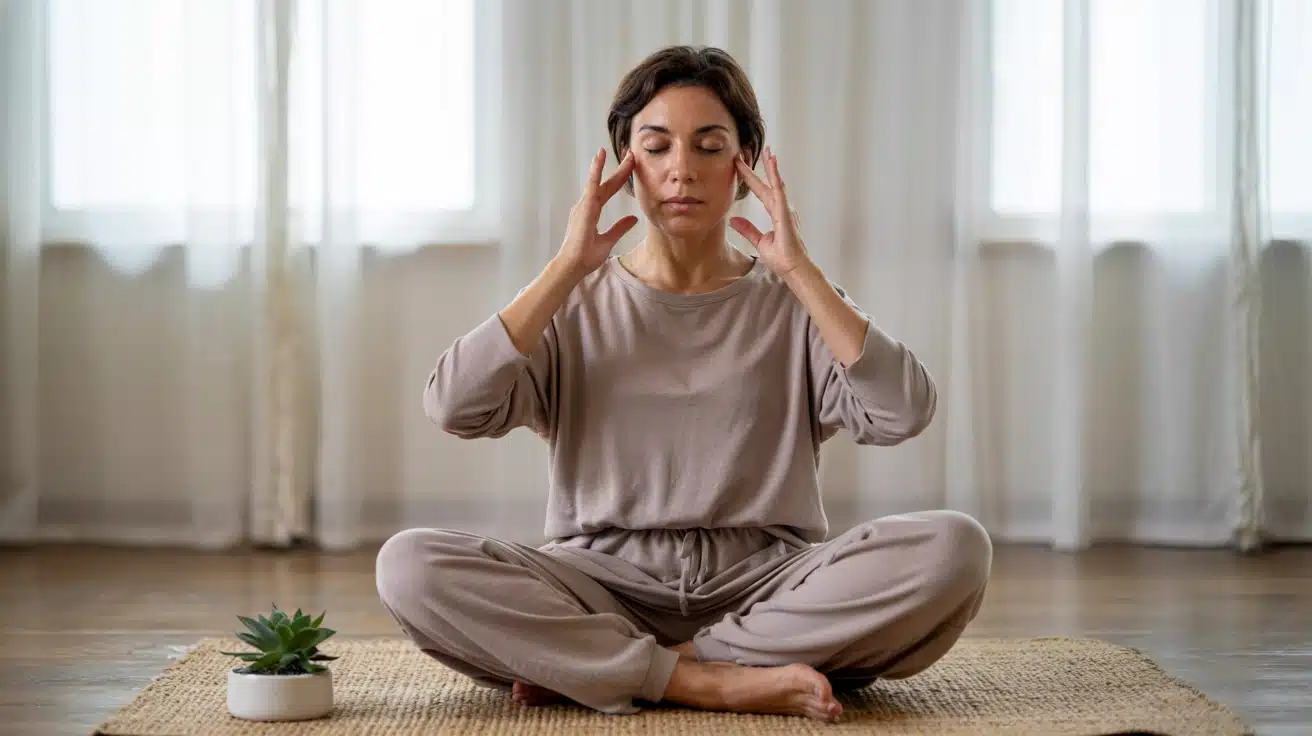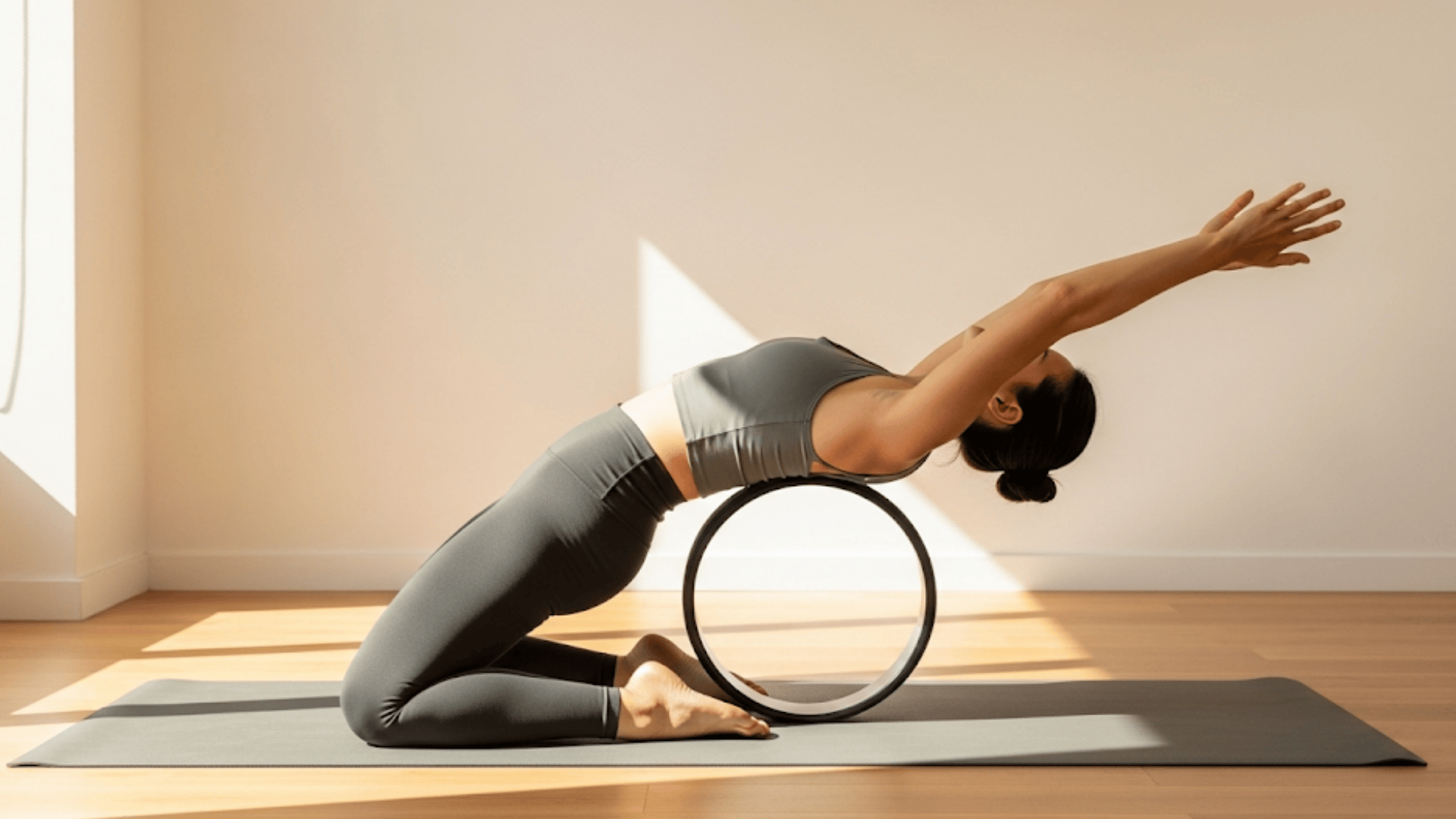Are you tired of practicing yoga alone and want to build stronger connections with friends or family?
Many yoga enthusiasts find solo practice fulfilling, but they often miss the social element that comes from practicing with others. 4-person yoga poses offer the perfect solution by combining physical benefits with teamwork and communication skills.
This article demonstrates how to safely perform four-person yoga poses that strengthen bonds while building flexibility and balance.
The blog covers beginner-friendly formations alongside advanced group poses for all skill levels.
Learn step-by-step instructions, overcome common challenges, and understand why group yoga creates lasting memories while improving practice experience.
How 4-Person Yoga Poses Improve Yoga Practice?
4-person yoga poses offer a unique way to deepen your practice while building stronger connections with friends, family, or fellow yogis.
These group poses require communication, trust, and coordination that go beyond individual practice. When you engage in 4 person yoga poses, you create a supportive network where each person’s stability helps maintain the entire formation.
Group yoga practice enhances body awareness as you learn to match your movements with others. The shared responsibility in 4 person yoga poses teaches patience and encourages participants to move mindfully.
These poses also provide natural spotting, where group members can help each other maintain proper alignment and prevent falls.
The social aspect of 4 person yoga poses makes practice more enjoyable and less intimidating for beginners. This collaborative approach to yoga builds community and creates lasting memories through shared accomplishment.
Best 4 Person Yoga Poses to Try
These five 4 person yoga poses range from beginner-friendly formations to advanced group challenges that build strength and coordination.
Each pose includes step-by-step instructions to help your group practice together successfully.
1. 4 Person Plank
The 4-person plank is a challenging group variation that creates a square formation where each person supports the next.
This pose requires core strength and balance from all participants while building cooperation among group members.
Follow these steps to get into formation:
- Have all four participants get into standard plank position, forming a square shape
- Each person places their feet on the back of the person in front of them, creating a connected chain
- Begin with shorter holds of 10-15 seconds as you build coordination
- Focus on maintaining proper plank form with straight bodies and engaged cores
- Keep communication open – call out if you need to rest or readjust
2. Square Pose
The square pose is a relaxing group formation that involves four people sitting back-to-back in a tight formation. This pose requires flexibility in the hips and hamstrings while promoting relaxation through group connection.
Follow these steps to get into formation:
- Each person sits with their legs extended forward while leaning back against the person behind them
- Arms can be crossed over the chest or extended outward for balance
- Start by having everyone sit close together, then gradually lean back until you feel the support of the person behind you
- Keep your spine straight and breathe deeply
- Hold for 30 seconds to 2 minutes, depending on comfort level
3. 4 Person Pyramid
The 4 person pyramid is an advanced group pose that demands significant upper-body strength and coordination. This impressive formation requires two people as the base, one person in the middle, and one person at the top, creating a stunning visual display of teamwork and skill.
Follow these steps to get into formation:
- Two people form the base in downward dog position, positioned parallel to each other about arm’s length apart
- The middle person places their hands on the lower backs of the base people and walks their feet up to create an inverted V shape
- The top person carefully places their hands on the middle person’s lower back and positions their feet for the peak of the pyramid
- Build up to this pose gradually, starting with 2-person and 3-person variations
- Clear communication is crucial for safety, and the base people must maintain strong, stable positions throughout the pose
4. 4 Person Downward Dog
The 4 person downward dog chain creates a flowing line of connected poses that requires strong shoulders and core stability from all participants. This variation builds coordination between multiple participants while developing reliance through physical support.
Follow these steps to get into formation:
- The first person assumes the traditional downward dog position
- The second person places their hands about two feet in front of the first person’s hands and carefully walks their feet up to rest on the first person’s lower back
- The third and fourth people continue this pattern, creating a chain of connected downward dogs
- Start with just two people and gradually add more as coordination improves
- Each person must maintain proper downward dog alignment while supporting or being supported by others
- Exit the pose slowly and in reverse order
5. 4 Person Tree Pose
Four-person tree pose is a balance-focused group formation that involves standing in a circle with arms interlocked for support. This pose develops balance and concentration while fostering group unity and building confidence through shared stability.
Follow these steps to get into formation:
- Stand in a circle with arms interlocked for support
- Each person lifts their inside leg and places their foot against their standing leg, just like in traditional tree pose
- The group maintains balance by holding each other’s arms or shoulders, creating a stable support system
- Start with everyone’s lifted leg in the lower position against the ankle or calf
- As balance improves, participants can lift their foot higher up the standing leg
Challenges You Might Face with 4 Person Yoga Poses
Group yoga practice presents unique challenges that can impact balance, coordination, and communication among participants.
Learn practical solutions to overcome common challenges and ensure safe, enjoyable 4 person yoga poses for everyone.
| Challenge | Solution |
|---|---|
| Balance Issues | Slow down transitions and focus on finding stability before adding complexity. Use walls or props for additional support when learning new poses. |
| Coordination Problems | Practice counting together and moving on specific beats. Use simple counting patterns like “1-2-3-move” to synchronize transitions. |
| Strength Limitations | Modify formations to accommodate different abilities. Build strength gradually through regular practice rather than forcing difficult poses. |
| Communication Breakdowns | Establish clear verbal and non-verbal signals before starting each session. Create a supportive environment where everyone feels comfortable expressing their needs. |
Key Tips for 4 Person Yoga Success
Preparation is Key
Always warm up thoroughly before attempting group poses, and practice basic poses individually before trying group variations. Choose participants with similar skill levels when possible to ensure everyone can participate safely.
Communication Matters
Establish clear communication signals for entering and exiting poses. Designate a leader to guide transitions and timing, ensuring everyone moves together. Never ignore pain or discomfort during group poses.
Begin with the Basics
Move slowly and focus on form over duration rather than rushing into complex formations. Build endurance gradually as your group develops coordination and trust with each other.
Create the Right Environment
Ensure adequate space around your group to prevent injuries and schedule regular practice sessions to build familiarity. Consistency helps everyone understand each other’s movement patterns and capabilities.
The Bottom Line
4-person yoga poses transform individual practice into a shared experience that builds trust, communication, and physical strength.
These group formations require patience and coordination but reward participants with deeper connections and improved balance skills.
Starting with basic poses allows groups to develop confidence before attempting complex variations. The collaborative nature of 4 person yoga poses teaches valuable lessons about supporting others while maintaining personal stability.
Regular practice creates muscle memory and improves timing, making challenging poses feel natural over time. The social benefits extend beyond the mat, strengthening relationships through shared goals and mutual encouragement.
Gather three friends, choose a spacious area, and start with simple 4-person yoga poses to experience the unique benefits of collaborative movement and lasting connection.









